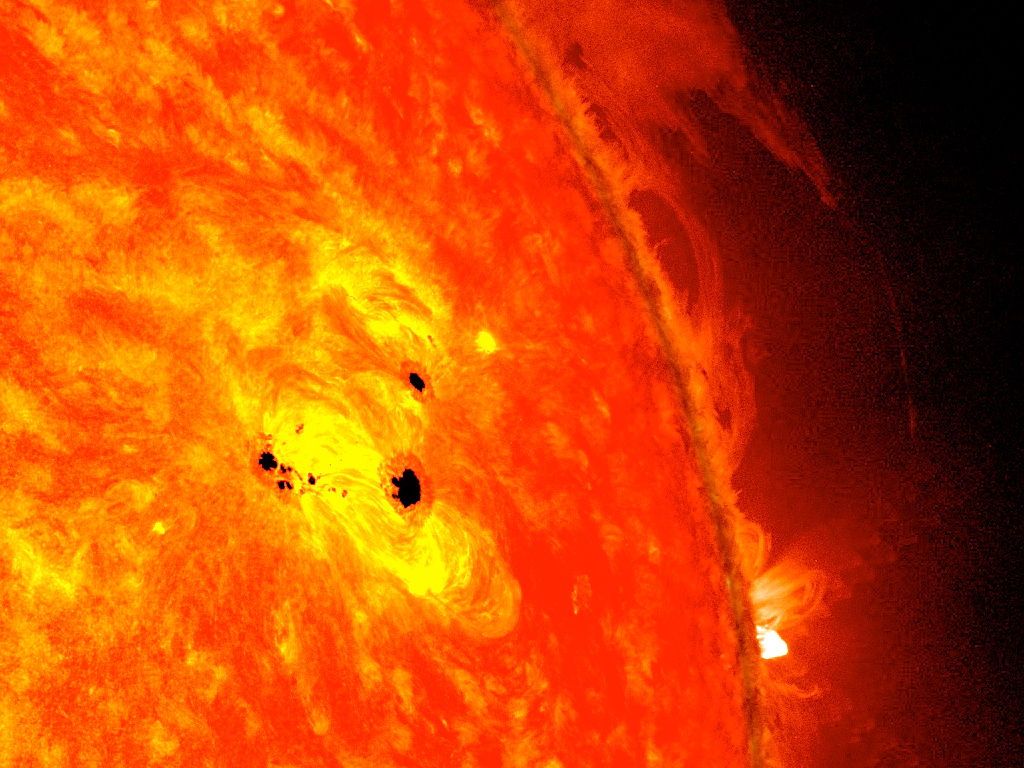See the Sun Up Close in Live Webcast Today

The sun's solar weather cycle is it at its peak this year, and today (March 5) you can get an up-close look at Earth's nearest star through an Arizona telescope in a live webcast.
The online Slooh Space Camera, which organizes live views of the sun and night sky through telescopes around the world, will hold a free webcast today at 2:30 p.m. EST (1930 GMT). The webcast will feature live views of the sun as seen through a telescope at the Prescott Observatory in Arizona.
The sun is currently in an active phase of its 11-year weather cycle and is expected to reach its peak, called solar maximum, in 2013. NASA scientists have said the current sun weather cycle, called Solar Cycle 24, has been relatively quiescent compared to previous cycles, but it could flare up later this year in a second activity peak.
You can watch the Slooh sun webcast here on SPACE.com. It will last about 30 minutes and feature commentary from Slooh President Patrick Paolucci, astronomer Bob Berman, Prescott Observatory manager Matt Francis and SPACE.com managing editor Tariq Malik. [Amazing Solar Flare Photos from NASA]
"This has been the strangest solar cycle of our lifetimes, lasting 13 years instead of the normal 11. And it has been a deeper minimum, with no sunspots or solar storms observed for longer periods than anyone alive has ever witnessed — with earthly consequences that included a partial suppression of global warming," Berman said in a statement. "So with the new cycle number 24 here at last, and with Solar Max expected in the next few months, and with the sun erupting with intriguing 'coronal holes' and flares and prominences and violent coronal mass ejections just in the past few weeks, there's never been a better time to have a look for ourselves — which is what Slooh is going to do."
You can also follow the Slooh webcast live via the Slooh Space Camera website.
Several spacecraft, including NASA's Solar Dynamics Observatory, twin Stereo spacecraft and the Solar and Heliospheric Observatory mission by NASA and the European Space Agency, keep constant watch on the sun for signs of sunspots, solar flares, massive eruptions or other space weather phenomena.
Sign up for the Live Science daily newsletter now
Get the world’s most fascinating discoveries delivered straight to your inbox.
When aimed at Earth, strong solar flares and eruptions can supercharge the Earth's aurora displays over the poles. The most powerful solar storms can also pose a risk to astronauts and satellites in space, as well as interfere with communication and navigation signals, and even impair power grids on the surface.
WARNING: NEVER stare directly at the sun through a telescope, binoculars or your unaided eyes without protection. Astronomers use special solar filters to safely observe the sun through telescopes.
This story was provided by SPACE.com, sister site to Live Science. Email Tariq Malik at tmalik@space.com or follow him @tariqjmalik. Follow us @Spacedotcom, Facebook & Google+. This article was first published on SPACE.com.

Tariq is the editor-in-chief of Live Science's sister site Space.com. He joined the team in 2001 as a staff writer, and later editor, focusing on human spaceflight, exploration and space science. Before joining Space.com, Tariq was a staff reporter for The Los Angeles Times, covering education and city beats in La Habra, Fullerton and Huntington Beach. He is also an Eagle Scout (yes, he has the Space Exploration merit badge) and went to Space Camp four times. He has journalism degrees from the University of Southern California and New York University.












